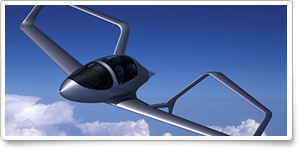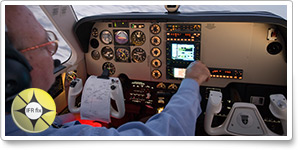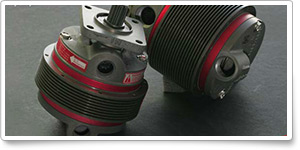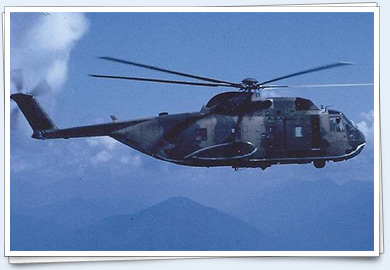| ||||||
| Do it like Doolittle |
| |||||
| Click here for this week’s custom content. | |
FEATUREDDo it like Doolittle | |
GA NewsFree memberships available for active-duty militaryAOPA is honoring the service of active-duty military members by offering them a complimentary one-year membership. The free membership is designed to allow military members to take their love of aviation beyond their uniform. Read more >> Calling the bottom for aircraft salesIs there a “new normal” in the aviation market? That question has been asked time and again about the state of public- and private-sector economies as turbulent times roil markets and shake the foundations of conventional economic thinking. In the aviation marketplace, some aircraft dealers are expressing new optimism, even as prices continue to slip, says Vref, an aviation industry source of aircraft value reference based in Cottonwood, Ariz. Read more >> SpaceX capsule delivers cargo to space stationSpace Exploration Technologies Corp. (SpaceX) made history May 25 as the first private company to dock a spacecraft with the International Space Station. When the company’s Dragon capsule completed its berthing at 12:02 p.m. Eastern, it joined just four governments—the United States, Russia, Japan, and the European Space Agency—that had previously achieved the feat. The demonstration flight marks a milestone toward SpaceX’s goal of launching regular missions to resupply the station. Read more >> Kickstarter funds Synergy prototype FAA seeks input on warbird passenger flightsSoon after an aborted effort to ground warbirds, the FAA is gathering public comment on whether they should be subject to new restrictions. The input gained will help the FAA decide the fate of future requests to exempt vintage military aircraft from revenue passenger restrictions. Read more >> Corrosion eats author’s aircraftIt turned out to be a small repair, but a good reminder that “corrosion never sleeps.” It doesn’t pick and choose between aircraft brands, either. Four bolts that helped hold the tail of a 1978 Piper Warrior in place had lost their heads, though the parts they held remained in place. It would have gone on at least another year to the next annual inspection, but for a sharp eye, a couple of man-hours, and a few fresh fasteners. Read more >> Icon video promotes spin-resistant marketing strategy Despite downturn, aircraft manufacturing criticalAviation groups said a newly released report on the state of the business aircraft industry highlights challenges facing the sector and confirms the “critical importance” of aircraft manufacturing to the nation’s industrial base. Read more >> Resuming the Journey: More takeoffs and landingsHer confidence shaken after a bruising round of touch and goes, a pilot returning to flying sought the wisdom of two experienced pilots. She took off for her third lesson with three action items in mind, and in spite of distractions all around, she kept her main focus on flying a textbook pattern, establishing a stable approach, and greasing the landing. Read more >> ‘Snoopy 1’ travels country, visits DC area Sandia introduces new transponderLooking for a full-featured transponder in a small package? Sandia Aerospace’s newly certified STX 165 fits that bill. At fewer than 2 pounds, and only 3.5 by 1.75 by 7 inches, it can fit into almost any panel. The STX 165 has both Mode A and Mode C capability. It also features three different timers, and a pressure altitude display. An optional probe is available to display outside air temperature, density altitude, and an icing alert. The STX 165 is available for an introductory price of $1,700. Contact Sandia for more information. Hawker Beechcraft takes orders for G1000 upgradesWith a supplemental type certificate now in place allowing Garmin G1000 suite installations in King Air 300/350 models, Hawker Beechcraft Services announced the first six orders are booked. Read more >> Island hopping GA styleThe Bahamas Out Island Promotion Board is hoping to attract private pilots to more islands by offering an incentive package to those who fly to multiple Out Islands during their visit. Read more >> Comanche pilots fly into FrederickMembers of the International Comanche Society flew their distinctive single- and twin-engine aircraft into Maryland’s Frederick Municipal Airport on May 26, where they visited AOPA’s headquarters, celebrated general aviation, and discussed safety and proficiency. Read more >> | |||||||||||||||||||||||||||||||||||||||||||||||||
Flight Instructor Refresher Clinics | Air Safety Institute Safety Seminars | |||||||||
For a complete schedule, see AOPA Online. Can’t make it in person? Sign up for the CFI Refresher Online. |
Topics vary—for details and a complete schedule, see AOPA Online. | |||||||||
ADVOCACY
Mexican ATC fees catching pilots off guard
Mexico has begun to detain flights on the ground or deny access to airspace if an aircraft’s operator is listed as owing fees buried in the country’s tax code for air traffic services or control tower overtime. Making matters worse, some commercial handlers of flights owing fees have charged exorbitant amounts for their services, AOPA has learned. Pilots who owe fees may be unaware that they were being charged for using air traffic services. Read more >>
NPS role in airspace regulation opposed
Leaders of the Congressional GA Caucus urged House and Senate conferees to reject a bid to give the National Park Service unprecedented authority over aviation. Language inserted in a highway safety bill would give the park service authority to regulate commercial air tours over national park units. Reps. Sam Graves (R-Ga.) and John Barrow (D-Ga.) reminded conferees by letter that the FAA has responsibility for regulating operators and keeping the airspace safe.
Member Benefits
Should you refuse to take a breathalyzer?
Don’t believe the rumors: Pilots should not refuse a breathalyzer test if they are suspected of an alcohol- or drug-related offense while operating a motor vehicle. Allow the officer to perform the test. The FAA considers a refusal to test equivalent to a significant positive alcohol test result, and will require you to be evaluated by a substance abuse specialist. Dr. Warren Silberman, former manager of FAA Aerospace Medical Certification, offers advice for pilots suspected of this type of offense as part of AOPA’s Pilot Protection Services program. Read more >>
AOPA Career Opportunities
Ever dream of turning your passion for aviation into a career? We’re looking for a vice president of information systems; registration, housing, and meeting planner; aviation technical writer; member services representative; project manager of online products; and associate editor–Web/ ePilot. To learn more about other AOPA career opportunities, visit AOPA Online.
Community
Picture PerfectAOPA’s online photo gallery allows you to upload your own aviation photography as well as view, rate, and comment on others’ photos. Your favorite aviation images from AOPA Pilot are still available online through this new gallery. Take a look, and submit your own photos! | | |
Engage in AviationCheck out user-submitted events from your region. To include an event or to search all events in the calendar, visit AOPA Online. AOPA does not endorse the events listed below, nor have ePilot editors edited the submissions. AOPA assumes no responsibility for events listed.
| |
| |
QUIZ ME!Here’s a question asked by an AOPA member who contacted our aviation services staff through the AOPA Pilot Information Center. Test your knowledge.
Question: I am a private pilot without an FAA medical certificate and have transitioned to flying light sport aircraft under sport pilot rules. If another pilot is flying my LSA under the hood in conditions that satisfy sport pilot limitations, may I serve as safety pilot?
Answer: FAR 91.109 details the requirements for simulated instrument flight, during which the FAA has determined that the safety pilot is a required crewmember because of the task of avoiding other traffic. According to 91.109, a safety pilot needs to hold at least a private pilot certificate with appropriate category and class ratings. Then, as a required crewmember the pilot needs to hold a medical certificate under Part 61.3(c)1, which states that to serve as a required flight crewmember the pilot must hold a valid medical certificate. Therefore, even though you are operating under sport pilot regulations, simulated instrument flight would still require the safety pilot to hold both a private pilot and a medical certificate.
Got a question for our aviation services staff? The AOPA Pilot Information Center is a service available to all members as part of the annual dues. Call 800/USA-AOPA (800/872-2672), or email to [email protected]. |
| |
|
|
| |
|
| ||||
| | ||||
| ePilot Editor: Sarah Brown | Contributors: Alyssa Miller Jim Moore Jill W. Tallman Warren Morningstar Alton K. Marsh | | Production Team: Melissa Whitehouse Siobhan Byrne Lezlie Ramsey Mitch Mitchell William Rockenbaugh | Advertise in ePilot: |
| Member Tools: Send feedback | ePilot Archive © 2012 Aircraft Owners and Pilots Association | 421 Aviation Way Frederick, MD 21701 | Phone 800/USA-AOPA | Fax 301/695-2375 | ||||












